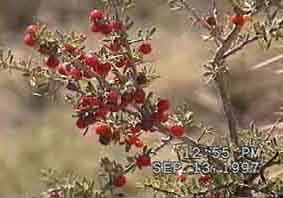Trees & Shrubs
Main sources: Phillips, Steven & Patricia Comus, eds., 2000, A Natural History of the Sonoran Desert, Tucson: Arizona-Sonora Desert Museum Press; Kearney, Thomas & Robert Peebles, et al, 1960, Arizona Flora, Berkeley: University of California Press; Robichaux, Robert, 1999, Ecology of Sonoran Desert Plants and Plant Communities, University of Arizona Press, Tucson; Epple, Ann, 1995, A Field Guide to the Plants of Arizona, Helena, Montana: Fountain Press; Bowers, Janice, 1993, Shrubs and Trees of the Southwest Deserts, Southwest Parks & Monuments Association, Tucson Arizona; Elmore, Francis, 1976, Shrubs and Trees of the Southwest Uplands, Southwest Parks & Monuments Association, Tucson Arizona; Parker, Kittie, 1972, An Illustrated Guide to Arizona Weeds, Tucson: University of Arizona Press; Rea, Amadeo, 1997, At the Desert's Green Edge, University of Arizona Press, Tucson (and see in the page links below for sources relevant to specific types).
Aside from the Saguaro cacti, the main feature that distinguishes the Sonoran Desert from the other deserts of North America (the Chihuahuan, the Mojave, the Great Basin) is the presence of many leguminous trees and shrubs, members of the Pea or Bean Family -- the Fabaceae. This is a very rich family, one of the most important kinds of plants in the world. This vegetational richness derives from both our biseasonal rainfall and our relatively mild winters, which have fostered a long-term migration of tropical thornscrub vegetation from further south. Our Arizona Uplands subdivision of the Sonoran Desert, whose proximity to various "sky-Islands" fosters a multitude of microhabitats, and resembles thornscrub more than it does desert. (See San Pedro River Valley for wide-ranging discussion of our environment, and see San Pedro Valley Flora Today for discussion of current vegetation in relation to our Biomes.) The pages below detail some of the specific diversity of vegetation, including both leguminous and non-leguminous varieties of trees and shrubs.
|
|
|
|













